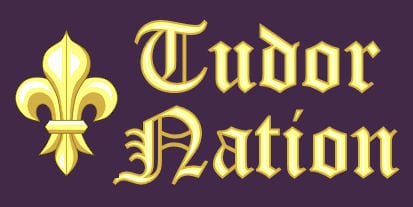A Tudor Christmas was celebrated primarily as a religious festival, but also as a time for families to come together and celebrate surviving through another year.
The main period of festivities was the twelve days of Christmas beginning on Christmas Day (25th December) and ending on Epiphany (6th January). For most people this period was a holiday from work.
A Religious Festival

First and foremost Christmas was a religious festival to celebrate the birth of Jesus. In the period leading up to Christmas, known as Advent, people fasted and used the time for spiritual reflection in preparation for the celebration.
On Christmas Day everyone would attend church where the service would include masses and singing.
Decorations

The Tudors decorated their homes with mistletoe, holly and ivy on Christmas Eve. They would also find a large log which would be placed in the hearth and kept alight for the twelve days. This became known as the yule log.
Decorations would remain up until twelfth night. It was considered very bad luck to leave them up beyond that date.
Food
The period before Christmas, known as Advent, was a time when people refrained from eating meat, cheese and eggs. This period of fasting accompanied a period of spiritual reflection in preparation for the coming of Christ.
After attending church on Christmas Day, the Tudors would eat a substantial meal that would begin with plum pudding, a thick broth of meat, plums, spices and breadcrumbs. This would be followed by a boar’s head stuffed with meat and herbs.

In the 1520s it became traditional to eat turkey as part of the Christmas meal. The feast also included ‘mince pyes’ which were made from 13 different ingredients to symbolise Jesus and the 12 disciples. The food would be washed down with a drink of warm ale flavoured with sugar and spices from the Wassail bowl (bowl of good health).
As part of the festivities on twelfth night, a cake made of fruit and spices would be served. Baked inside the cake would be a dried bean and the person who found the bean in their slice of cake would be given the title ‘King or Queen of the Bean’ and put in charge of entertainments for the rest of the evening.
Entertainment
Christmas Carols first appeared in England 1426, having been popular in Italy since the 13th Century. Carolling in Tudor times involved singing and dancing. The majority of the songs had a religious theme but during the Tudor period songs about celebrating and feasting became popular. The carols ‘Good King Wenceslaus’, ‘We Wish You a Merry Christmas’ and ‘The First Noel date from the sixteenth century.
The Tudors loved storytelling, whether by the fireside or through plays, pageants and tableaux. On Christmas Eve it was traditional to tell ghost stories while sitting by the fire. It was also a time to remember those family members that had died.
After the religious services of Christmas Day, the rest of the twelve days of Christmas would be full of entertainments including feasts, music, dancing, masquerades, plays, pageants. Jugglers, acrobats and fire-eaters would also be employed to entertain guests. The Lord of Misrule was in charge of arranging the entertainment of the period. Father Christmas was a popular character in Christmas plays and pageants. He was dressed in green and wore a mask and wig.

Hunting and sports such as shuttlecock, tennis and skittles would also take place throughout the twelve days of Christmas.
It was traditional for a play to be staged on twelfth night. Tudor plays were so popular that by the end of the Elizabethan period that people would frequently attend the theatre.
Gifts
The giving of gifts took place on New Year’s Day. It was a tradition that had begun in Roman times and had continued. Often the giving of gift’s would be a way of currying favour with one’s lord, king or potential ally.
Published Dec 24, 2020 @ 4:11 pm – Updated – Dec 7 2024
Harvard Reference for A Tudor Christmas:
Heather Y Wheeler. (2020 – 2025). A Tudor Christmas Available: https://www.tudornation.com/a-tudor-christmas Last accessed April 19th, 2025
